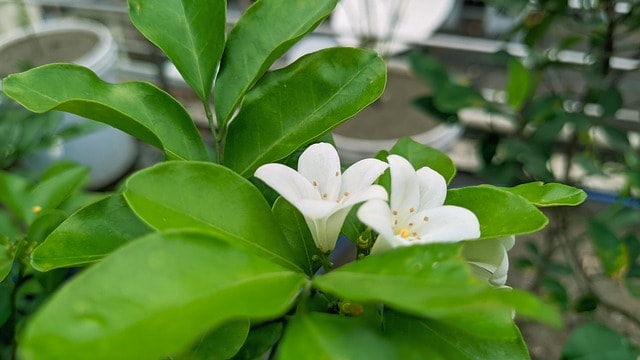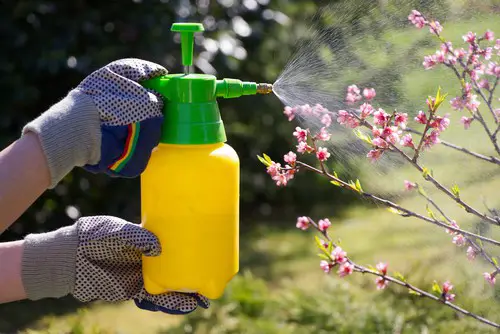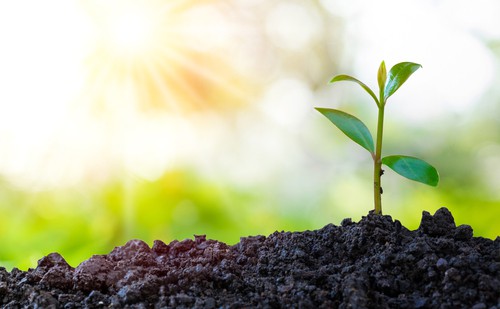Jasmine plants are known for their intoxicating fragrance and glossy green leaves. However, brown spots on jasmine leaves can be a common problem for plant owners. Brown spots can be an indication of a variety of issues that can affect the health of the plant.
Understanding the causes, symptoms, and treatment options for brown spots on jasmine leaves is crucial to maintaining the health of the plant.
There are several common causes of brown spots on jasmine leaves, including fungal and bacterial leaf spots, under watering, over watering, and soil discomfort. Identifying the cause of brown spots is the first step in determining the appropriate treatment.
Symptoms of brown spots on jasmine leaves can vary depending on the underlying cause, but may include discoloration, wilting, and leaf drop. Proper care and prevention strategies can help reduce the risk of brown spots on jasmine leaves.
Key Takeaways
- Brown spots on jasmine leaves can be a sign of several issues that can affect the health of the plant.
- Identifying the underlying cause of brown spots is crucial to determining the appropriate treatment.
- Proper care and prevention strategies can help reduce the risk of brown spots on jasmine leaves.
You shouldn’t miss on these other top posts:
Understanding Brown Spots on Jasmine Leaves

Jasmine plants are known for their delicate, white flowers and glossy green leaves. However, brown spots on jasmine leaves can be a common issue that gardeners face. These brown spots can be caused by various factors, including fungal diseases, environmental stress, and insect infestations.
Leaf spots caused by fungal diseases are one of the most common reasons for brown spots on jasmine leaves. One such fungal disease is brown leaf spot, which initially causes small brown spots on the leaves.
As the disease progresses, the spots can become larger and irregular, eventually affecting the entire plant. Fungal diseases can spread quickly, so it is important to identify and treat them promptly.
Environmental stress can also cause brown spots on jasmine leaves. This can be due to weather changes, such as excessive heat or cold, drought, or overwatering. Discoloration caused by environmental stress is typically uniform and affects multiple leaves. In severe cases, the leaves may turn completely brown and fall off.
Insect infestations can also cause brown spots on jasmine leaves. For example, spider mites can cause black spots on the leaves, while mealybugs can cause yellowish-brown spots. Insect infestations can weaken the plant and make it more susceptible to other diseases.
To prevent brown spots on jasmine leaves, it is important to provide proper care and maintenance. This includes regular watering, fertilization, and pruning. It is also important to monitor the plant for signs of disease or insect infestations and treat them promptly.
If the problem persists, it may be necessary to consult a professional gardener or horticulturist.
Brown Spots on Jasmine Leaves – 4 Common Problems
Jasmine plants are known for their glossy green leaves and fragrant white flowers. However, brown spots on the leaves can be an indication of an underlying problem. In this section, we will discuss the common causes of brown spots on jasmine leaves.
1. Disease and Fungi

Diseases and fungi are a common cause of brown spots on jasmine leaves. Fungal diseases like brown leaf spot and powdery mildew can cause brown spots on the leaves.
These diseases are usually caused by high humidity levels and poor air circulation. Brown leaf spot causes brown spots on the leaves at the initial stage, which gradually spreads to its surroundings forming large irregular spots all over the plant.
Powdery mildew, on the other hand, creates a white, powdery substance on the leaves, which eventually turns brown.
2. Pest Infestation
Pests like aphids, mealybugs, and whiteflies can also cause brown spots on jasmine leaves. These pests suck the sap from the leaves, causing them to turn yellow and eventually brown. Mealybugs and whiteflies also secrete a sticky substance called honeydew, which attracts ants and can lead to the growth of black mold on the leaves.
3. Environmental Stress
Environmental stress can also cause brown spots on jasmine leaves. Stressors like extreme temperatures, drought, and overwatering can cause the leaves to turn brown. In particular, overwatering can cause the roots to rot, which can lead to brown spots on the leaves.
4. Nutrient Deficiencies
Nutrient deficiencies can also cause brown spots on jasmine leaves. Lack of specific nutrients like nitrogen, phosphorus, and potassium can cause the leaves to turn brown. Herbicide damage can also cause brown spots on the leaves.
Symptoms and Diagnosis
Brown spots on jasmine leaves are a common symptom of various fungal diseases. The spots can vary in size and color depending on the specific organism involved, the plant affected, and the stage of development. Concentric rings or dark margins are often present. These spots weaken the plant by interrupting photosynthesis.
If the brown spots are accompanied by wilted or yellow leaves, the plant could be experiencing stress due to environmental conditions. Climate shock, weather, and other factors can cause stress that leads to discoloration of the leaves. New growth may also be stunted or distorted in plants suffering from stress.
To diagnose the cause of brown spots on jasmine leaves, it is important to inspect the plant closely. Look for other symptoms such as discolored halos or patches, streaked stems, and necrotic areas. If the plant has been stressed, it may be more susceptible to fungal diseases, which can further damage the leaves.
In some cases, it may be necessary to take a sample of the affected plant to a professional for diagnosis. They can examine the sample under a microscope and identify the specific organism causing the brown spots. Once the cause has been identified, appropriate treatment can be prescribed.
It is important to note that not all brown spots on jasmine leaves are caused by fungal diseases. Stress, nutrient deficiencies, and other factors can also cause discoloration. Therefore, it is important to accurately diagnose the cause before attempting treatment.
Prevention Strategies
Jasmine plants are susceptible to different kinds of fungal diseases that can cause brown spots on the leaves. To prevent these diseases from affecting your plant, it is important to take proper care of it. Here are some prevention strategies that can help keep your jasmine plant healthy.
1. Proper Watering

Proper watering is essential for the growth and health of jasmine plants. Overwatering or underwatering can cause stress to the plant, making it more susceptible to fungal diseases. To prevent brown spots on the leaves due to improper watering, it is important to follow these tips:
- Water the plant deeply but infrequently, allowing the soil to dry out slightly between waterings.
- Water the plant at the base, avoiding getting water on the leaves.
- Use well-draining soil to prevent waterlogging, which can lead to root rot.
2. Appropriate Fertilizing
Fertilizing is important for the growth and health of jasmine plants. However, overfertilizing can cause stress to the plant, making it more susceptible to fungal diseases. To prevent brown spots on the leaves due to improper fertilizing, it is important to follow these tips:
- Use a slow-release fertilizer to avoid overfertilizing.
- Follow the instructions on the fertilizer package to avoid applying too much fertilizer.
- Fertilize the plant during the growing season, avoiding fertilizing during the dormant season.
3. Regular Pruning
Regular pruning is essential for the growth and health of jasmine plants. Pruning helps to remove dead or diseased branches, improving air circulation and reducing the risk of fungal diseases. To prevent brown spots on the leaves due to improper pruning, it is important to follow these tips:
- Prune the plant regularly to remove dead or diseased branches.
- Prune the plant after flowering to encourage new growth.
- Use clean pruning tools to prevent the spread of fungal diseases.
4. Effective Mulching
Mulching is important for the growth and health of jasmine plants. Mulch helps to retain moisture in the soil, suppress weeds, and regulate soil temperature. To prevent brown spots on the leaves due to improper mulching, it is important to follow these tips:
- Use organic mulch such as bark mulch or pine straw.
- Apply a layer of mulch around the base of the plant, avoiding contact with the stem.
- Replace the mulch regularly to prevent the buildup of fungal spores.
By following these prevention strategies, you can help keep your jasmine plant healthy and prevent brown spots on the leaves.
Treatment Options
Jasmine plants suffering from brown spots on their leaves can be treated with a variety of methods. This section will cover some of the most effective treatments for the issue.
1. Using Neem Oil
Neem oil is a natural pesticide and fungicide that has been used for centuries to treat a variety of plant diseases. To use neem oil to treat brown spots on jasmine leaves, mix a tablespoon of neem oil with a gallon of water and spray the solution onto the affected leaves.
Neem oil can also be used as a preventative measure, by spraying the solution onto the plant every two weeks.
2. Applying Fungicides

Fungicides can be effective in treating brown spots on jasmine leaves caused by fungal diseases. However, it is important to note that not all fungicides are safe for all plants.
Before applying any fungicide, it is important to read the label and make sure it is safe for use on jasmine plants. One effective fungicide for treating brown spots on jasmine leaves is copper fungicide.
3. Addressing Nutrient Deficits
Brown spots on jasmine leaves can also be caused by nutrient deficits. Nitrogen, phosphorus, manganese, and iron are essential nutrients that jasmine plants need to thrive.
If a nutrient deficit is suspected, a soil test can be done to determine which nutrients are lacking. Once the nutrient deficit is identified, the appropriate fertilizer can be applied to the soil to correct the issue.
Caring for Jasmine Plants
Jasmine plants are a popular choice among gardeners for their fragrant blooms and glossy leaves. However, brown spots on jasmine leaves can be an indication of underlying issues that need to be addressed. Proper care and maintenance can help prevent brown spots and keep jasmine plants healthy and thriving.
1. Choosing the Right Environment
Jasmine plants thrive in warm, humid environments with well-drained soil. They prefer slightly acidic soil with a pH between 6.0 and 7.0.
When planting jasmine, it’s important to choose a location that provides adequate sunlight and protection from strong winds. A location with partial shade is ideal, as direct sunlight can scorch the leaves.
2. Maintaining Moisture Levels
Jasmine plants require consistent moisture levels to thrive. They should be watered deeply once or twice a week, depending on the weather and soil conditions.
Overwatering can lead to root rot, while underwatering can cause the leaves to dry out and turn brown. It’s important to monitor the soil moisture levels and adjust watering accordingly.
3. Providing Adequate Sunlight

Jasmine plants require bright, indirect sunlight to grow and thrive. Direct sunlight can cause the leaves to burn and turn brown. If the plant is not receiving enough sunlight, it may not bloom or may produce weak, spindly growth. It’s important to provide the plant with adequate sunlight while protecting it from direct sunlight.
4. Ensuring Proper Spacing
Jasmine plants require adequate space to grow and thrive. They should be planted at least 3 feet apart to allow for proper air circulation and prevent overcrowding. Overcrowding can lead to poor growth and increased susceptibility to pests and diseases. It’s important to monitor the plant’s growth and adjust spacing as needed.
By following these care tips, gardeners can help prevent brown spots on jasmine leaves and keep their plants healthy and thriving. Proper care and maintenance are key to ensuring the long-term health and beauty of jasmine plants.
Types of Jasmine and Their Needs
Jasmine is a popular plant known for its fragrant and delicate flowers. There are different types of jasmine, each with its own unique characteristics and growing needs. In this section, we will discuss the most common types of jasmine and their requirements.
1. Star Jasmine
Star jasmine, also known as Trachelospermum jasminoides, is a popular variety that is commonly used as a ground cover or a climbing vine. It is a hardy plant that can tolerate a wide range of temperatures and soil conditions. Star jasmine prefers partial shade, but it can also grow in full sun as long as it is well-watered.
To keep star jasmine healthy, it is important to prune it regularly to control its growth and shape. Fertilizing it once a month during the growing season can also help it thrive.
2. Climbing Vines
Jasmine climbing vines, such as Confederate jasmine and Carolina jasmine, are popular for their ability to climb up walls, trellises, and other structures. These varieties require a support system to climb on, such as a trellis or a fence.
Climbing jasmine vines prefer full sun to partial shade and well-draining soil. They also require regular pruning to control their growth and shape. Fertilizing them once a month during the growing season can also help them thrive.
3. Jasmine for Pots and Balconies
If you live in an apartment or have limited outdoor space, you can still enjoy the beauty and fragrance of jasmine by growing it in pots on your balcony or patio. Dwarf jasmine varieties, such as the Arabian jasmine and the downy jasmine, are ideal for growing in pots.
Jasmine for pots and balconies requires well-draining soil and regular watering. Fertilizing it once a month during the growing season can also help it thrive.
4. Varieties
Aside from the aforementioned jasmine varieties, there are other types of jasmine that you can choose from, such as the winter jasmine, the Italian jasmine, and the pink jasmine. Each variety has its own unique characteristics and growing needs, so it is important to research and choose the right one for your garden or balcony.
Conclusion

Jasmine leaves can turn brown for various reasons, including fungal diseases, pests, environmental stress, and improper care. Identifying the underlying cause of the browning is crucial to treating the issue and preventing further damage to the plant.
One of the most common reasons for brown spots on jasmine leaves is fungal diseases, such as Alternaria leaf blight or brown leaf spots. These diseases can be prevented by avoiding overhead watering, removing infected leaves, and applying fungicides if necessary.
Pests, such as spider mites, can also cause brown spots on jasmine leaves. They can be controlled by using insecticidal soap or neem oil and maintaining proper humidity levels.
Environmental stress, such as extreme temperatures, drought, or excessive sunlight, can also cause jasmine leaves to turn brown. Providing adequate water, shade, and protection from harsh weather conditions can help prevent this issue.
Finally, improper care, such as over-fertilizing or using the wrong type of soil, can also cause brown spots on jasmine leaves. Using a well-draining soil mix and fertilizing only when necessary can help prevent nutrient imbalances and other care-related issues.
Overall, identifying the cause of brown spots on jasmine leaves and taking appropriate measures to address it can help keep the plant healthy and thriving.
Frequently Asked Questions
How do you treat brown spots on jasmine?
Brown spots on jasmine leaves can be caused by fungal diseases, improper watering, or lack of nutrients. To treat brown spots on jasmine, it is important to identify the underlying cause first.
If the cause is fungal disease, it is recommended to remove the infected leaves and spray the plant with a fungicide. If the cause is improper watering or lack of nutrients, adjust the watering schedule and fertilize the plant with a balanced fertilizer.
Why does my star jasmine have brown spots?
Star jasmine leaves may turn brown due to changes in weather, improper herbicide use, lack of specific nutrients, improper fertilization, diseases or pests affecting the roots, and under/over watering or sunlight overexposure.
It is important to identify the underlying cause first before treating the plant.
What are the black spots on star jasmine leaves?
Black spots on star jasmine leaves can be caused by a fungal disease called sooty mold. Sooty mold is a type of fungus that grows on the sticky substance left behind by insects such as aphids, mealybugs, and scale insects.
To treat sooty mold, it is important to control the insect infestation first. Once the insects are under control, the sooty mold can be removed by gently washing the leaves with soapy water.
How do you know if jasmine is overwatered?
Overwatered jasmine plants may show signs of yellowing leaves, wilting, and root rot. To prevent overwatering, it is important to check the soil moisture level regularly and water the plant only when the top inch of soil feels dry.
It is also important to make sure the plant is planted in well-draining soil.
What causes rust on jasmine leaves?
Rust on jasmine leaves is caused by a fungal disease called rust. Rust is a type of fungus that thrives in humid conditions. To prevent rust on jasmine leaves, it is important to avoid overhead watering and to plant the jasmine in an area with good air circulation.
What are common diseases of jasmine plants?
Common diseases of jasmine plants include fungal diseases such as brown leaf spots, rust, and powdery mildew. Jasmine plants may also be affected by viral diseases such as mosaic virus and bacterial diseases such as bacterial leaf spot.
It is important to identify the underlying cause of any disease before treating the plant.

Hey, I’m Lisa and I’ve been an avid gardener for over 30 years. I love writing, talking and living in the garden! Feel free to connect with me on my socials below

